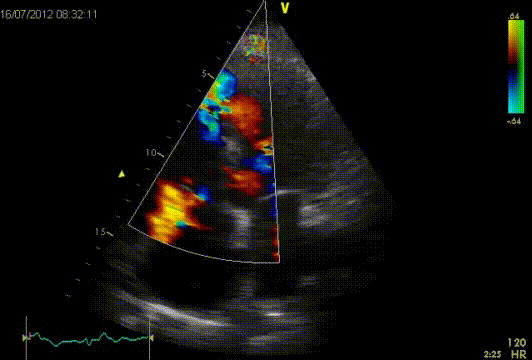Ventricular septum rupture (VSR) represents a feared and often fatal complication of myocardial infarction. The risk for VSR is highest in the first few days after the occurrence of a STEMI. A VSR usually presents as rapid-onset clinical deterioration with chest pain, acute heart failure and a loud systolic murmur. The diagnosis is confirmed by echocardiography, which is able to differentiate from acute mitral regurgitation and locate and quantify the rupture. The consequent left-to-right shunt may result in signs and symptoms of acute, new-onset right heart failure. Surgical repair is required urgently, but there is no consensus on the optimal timing for surgery . Early surgery is associated with a high mortality rate and a high risk of recurrent ventricular rupture, while delayed surgery allows easier septal repair in scarred tissue, but carries the risk of rupture extension, tamponade and death while waiting for the surgery.

